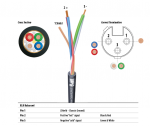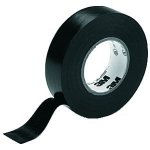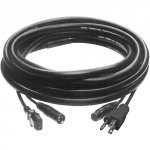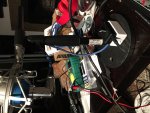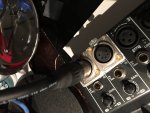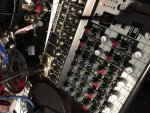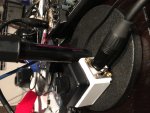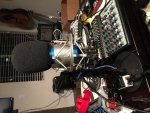Chris McDaniel
New member
I run a 6' xlr cable from my mic to my I/O.
I also run a 6' 1/4" headphone cable from my headphones to my I/O.
Does anybody make a cable that combines those 2 separate wires into 1? I am a crazy minimalist freak, and I would love to have a single wire run instead of 2 wire runs.
PS- I imagine that a knee-jerk reaction would be to scoff at running 2 differently tasked cables together, but I'm already doing it with a jerry-rigged setup and it works perfectly fine so please, respectfully, spare me any cries of sacrilege or claims of impossibility. I cut off the ends of an xlr cable and a 1/4" headphone extension cable, ran them thru a 6' shrink tube, and re-soldered the xlr and 1/4" connectors at the end. It works and there's no interference (maybe cause it's only 6' feet, maybe cause there's not much interference where I use them, I dunno, the jerry rigged cords have just worked perfectly fine for hours of recording). The only problem with my jerry rigged cables and why I'm asking if there's something already out there for this, is that the shrink tube I used kind of hardened after cooling and are about the consistency of soft pvc pipe. Not rigid like a plumbing pvc pipe because they're not thick, but definitely more rigid than any kind of standard xlr cord that I'd prefer to use.
Thanks for any help.
I also run a 6' 1/4" headphone cable from my headphones to my I/O.
Does anybody make a cable that combines those 2 separate wires into 1? I am a crazy minimalist freak, and I would love to have a single wire run instead of 2 wire runs.
PS- I imagine that a knee-jerk reaction would be to scoff at running 2 differently tasked cables together, but I'm already doing it with a jerry-rigged setup and it works perfectly fine so please, respectfully, spare me any cries of sacrilege or claims of impossibility. I cut off the ends of an xlr cable and a 1/4" headphone extension cable, ran them thru a 6' shrink tube, and re-soldered the xlr and 1/4" connectors at the end. It works and there's no interference (maybe cause it's only 6' feet, maybe cause there's not much interference where I use them, I dunno, the jerry rigged cords have just worked perfectly fine for hours of recording). The only problem with my jerry rigged cables and why I'm asking if there's something already out there for this, is that the shrink tube I used kind of hardened after cooling and are about the consistency of soft pvc pipe. Not rigid like a plumbing pvc pipe because they're not thick, but definitely more rigid than any kind of standard xlr cord that I'd prefer to use.
Thanks for any help.



